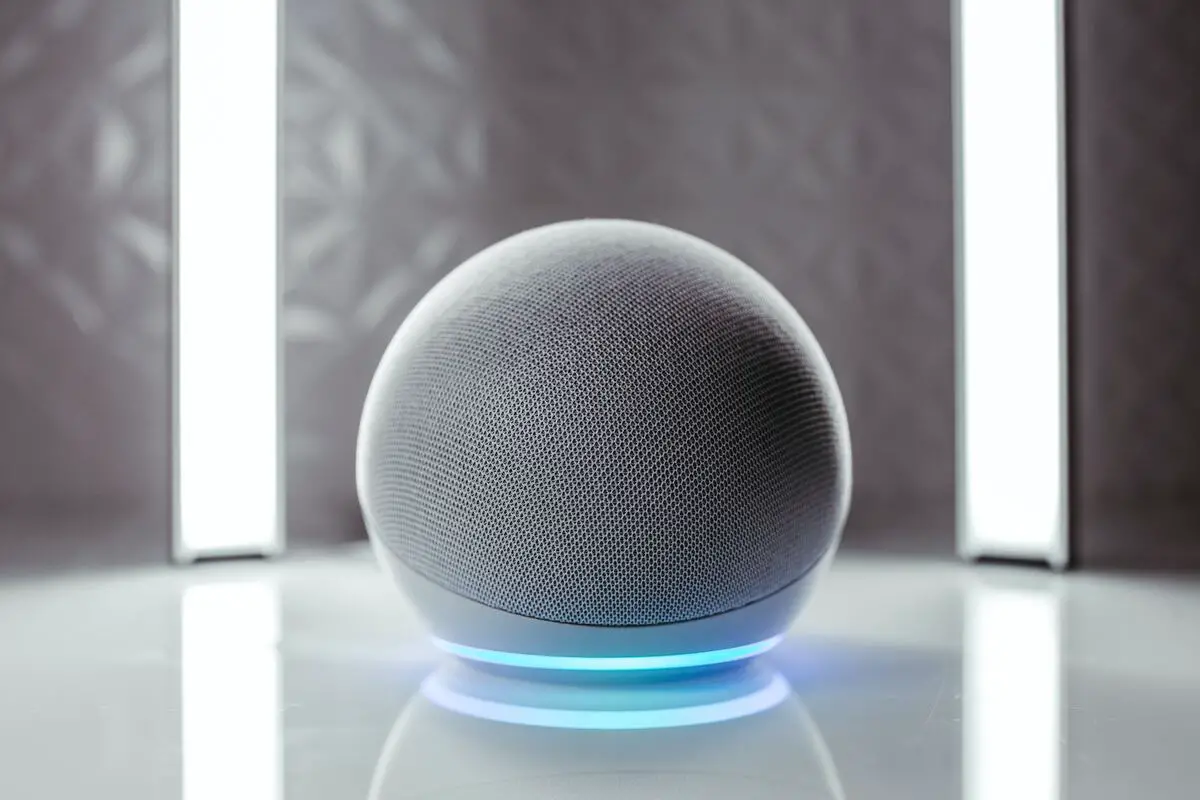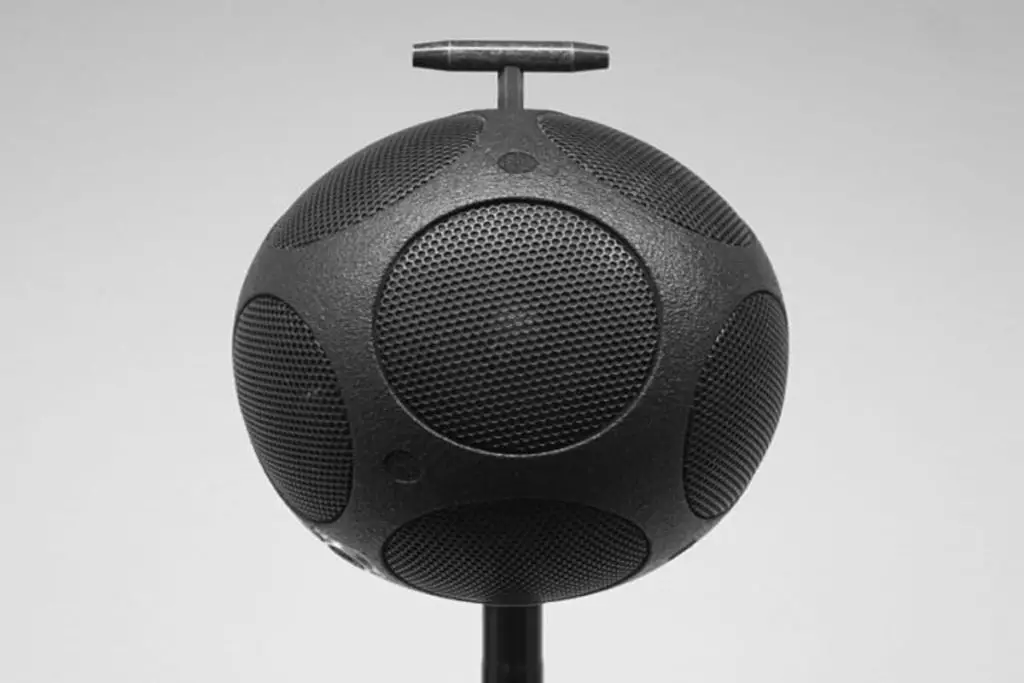Do you ever find yourself spinning in circles, trying to locate that ‘sweet spot’ for the perfect sound from your speaker? You move left. You move right. You even try balancing on one foot, all in pursuit of that crystal-clear symphony. Well, guess what? We’ve got a solution that will put an end to your audio acrobatics once and for all. Let’s dive into the world of omnidirectional speakers.
What is an omnidirectional speaker? An omnidirectional speaker, also referred to as a “360-degree speaker,” is a type of loudspeaker that produces sound in all directions equally.
How do omnidirectional speakers differ from traditional ones?
The standard stereo speaker setup, with speakers in front of you, sends sound in one general direction. This is called a directional or “monopolar” speaker configuration. Omnidirectional speakers, on the other hand, are designed to evenly distribute sound throughout the listening space, regardless of the listener’s position.

This is achieved through various design strategies, such as utilizing multiple speaker drivers pointed in different directions, using sound-reflective structures to disperse the sound, or employing special transducer technologies.
Picture a pebble thrown into a pond. The ripples that it creates spread out in all directions, right? That’s how an omnidirectional speaker works. Your beats are the pebble, and the ripples are the sound waves, filling up every nook and cranny of your space.
AKAI Professional MPK Mini MK3

AKAI Professional MPK Mini MK3
What are the benefits of omnidirectional speakers?
First up, we’ve got uniform sound coverage. Ever noticed how traditional speakers seem to have ‘loud’ and ‘soft’ spots in a room? With omnidirectional speakers, the sound fills up your space like smoke in a sealed jar – every nook, every cranny. With these 360-degree sound machines, the sweet spot isn’t a spot anymore. It’s everywhere!
Omnidirectional speakers are a dream come true for larger spaces. Imagine trying to fill a massive hall with just a single speaker.
So, no more jostling for that spot where the bass hits just right. Omnidirectional speakers are a dream come true for larger spaces. Imagine trying to fill a massive hall with just a single speaker. An omnidirectional speaker is s a game-changer, turning that hall into a haven of harmonies.
Let’s check out some do’s and don’ts when it comes to omnidirectional speakers:
| Do’s | Don’ts |
|---|---|
| Do use them in larger spaces | Don’t place them near walls |
| Do position them centrally | Don’t overlook room acoustics |
| Do explore different brands | Don’t skip on maintenance |
How does the sound quality of omnidirectional speakers stand out?
Omnidirectional speakers are like the maestro conducting an orchestra, ensuring every instrument, every note, and every beat is heard clearly, no matter where you’re seated in the concert hall. Their ability to disperse sound uniformly across a space ensures an immersive listening experience that’s hard to beat.

Let’s break it down with an example. Imagine you’re chilling in your pad, playing your favorite album. With traditional speakers, you’ll likely experience a drop in sound quality as you move away from the ‘direct line of fire.’ But with an omnidirectional speaker, whether you’re cooking in the kitchen, lounging on the couch, or even dancing in the shower, the sound quality remains consistent.
What are some popular brands of omnidirectional speakers?
Here, you’ll find a quick rundown of the hottest brands and their average price range, so you can start planning your next sonic investment. Just a heads up, quality sound doesn’t come cheap, but trust me, it’s worth every cent.
| Brand | Average Price Range |
|---|---|
| Bose | $200 – $800 |
| B&O Play | $300 – $1000 |
| Yamaha | $100 – $600 |
| Samsung | $150 – $700 |
| Harman Kardon | $250 – $900 |
Advantages and disadvantages
As much as I’ve been raving about omnidirectional speakers, it’s only fair to lay out the good and the not-so-good. So let’s go ahead and break it down.
Advantages
Here’s the thing, these speakers are absolute beasts when it comes to dishing out some killer advantages.
- Room Filling Sound: Given their dispersion pattern, these speakers are excellent at filling a room with sound, which can provide a more balanced and consistent listening experience, regardless of where you’re situated in the room.
- Less Positioning Dependent: With the ability to emit sound in all directions, omnidirectional speakers are less reliant on specific positioning or alignment within a room, which can offer greater flexibility for setup.
- Versatility: These speakers are useful in various settings, from conference rooms and churches to outdoor environments like parks and open-air festivals.
Disadvantages
But let’s keep it 100; every rose has its thorns, and omnidirectional speakers are no different.
- Lack of Directionality: The omnidirectional dispersion pattern can sometimes result in a less focused sound. In certain applications (like home theaters), having more directionality may be preferred to better match the visual cues on screen.
- Room Acoustics: Because the sound from these speakers is dispersed in all directions, they may interact with the room acoustics more than other types of speakers. This could be a disadvantage in rooms with poor acoustics.
- Cost: High-quality omnidirectional speakers can be quite expensive compared to their directional counterparts.
If you want more tips and insights, watch the video “Dipole, bipole and omnidirectional speakers“ from The Hans Beekhuyzen Channel YouTube channel.
Frequently asked questions (FAQ)
Do you still have questions about omnidirectional speakers? Below are some of the most commonly asked questions.
Do omnidirectional speakers need specific placement?
Unlike traditional speakers that need to be carefully positioned for optimal sound, omnidirectional speakers are far more forgiving. Because they emit sound in all directions, you can place them just about anywhere in the room.
Are omnidirectional speakers good for outdoor use?
Absolutely! Because of their ability to fill up larger spaces with sound, omnidirectional speakers are a popular choice for outdoor settings. Whether it’s a garden party, a BBQ, or just a chill session by the pool, these speakers have got you covered.
Can I use omnidirectional speakers for my home studio?
While omnidirectional speakers can definitely be used in a home studio setting, if you’re producing music or recording and need precise sound directionality, traditional studio monitors might serve you better.
Conclusion
So there you have it, my sound-hungry friends, your crash course in the world of omnidirectional speakers. Now, just like an omnidirectional speaker fills a room, I hope I’ve filled your mind with enough information about these 360-degree marvels. But hey, it’s okay if you still have some static. I’m here to tune it out.
Got a question? Want to share your own experience with omnidirectional speakers? Drop a line in the comments below! I read and reply to every comment. Feel free to share this post with any sound junkies you know and keep your eyes (and ears) peeled for more posts about all things audio.
Key Takeaways
This article covered omnidirectional speakers. Here are some key takeaways:
- Omnidirectional speakers emit sound in all directions, offering a more immersive and uniform audio experience.
- These speakers are ideal for larger spaces and offer an expanded ‘sweet space’ rather than a sweet spot.
- In terms of sound quality, they provide a consistent listening experience throughout the room.
- Top brands producing omnidirectional speakers include Bose, B&O Play, Yamaha, Samsung, and Harman Kardon.
- While they have many advantages, it’s also important to consider potential disadvantages, such as not being ideal for small spaces and their typically higher price point.















